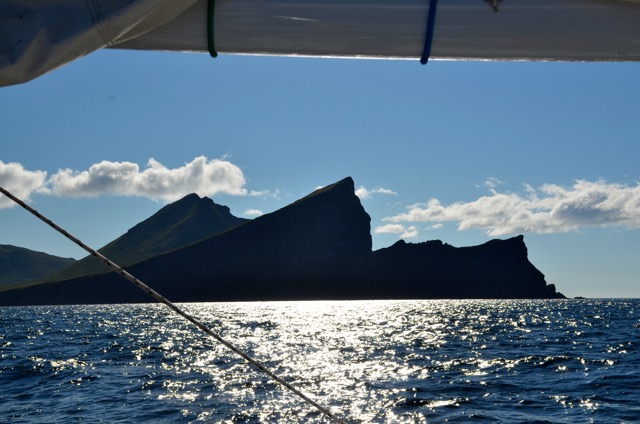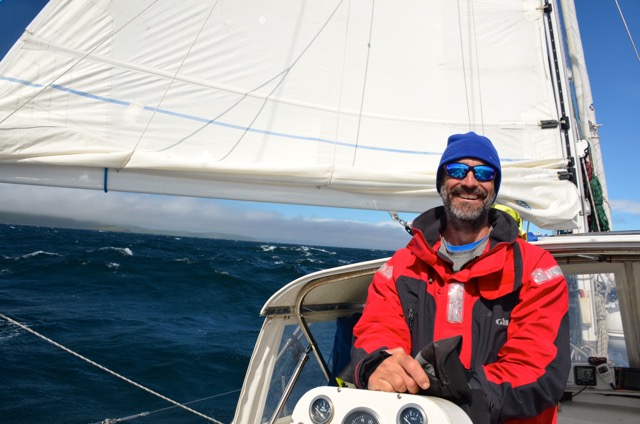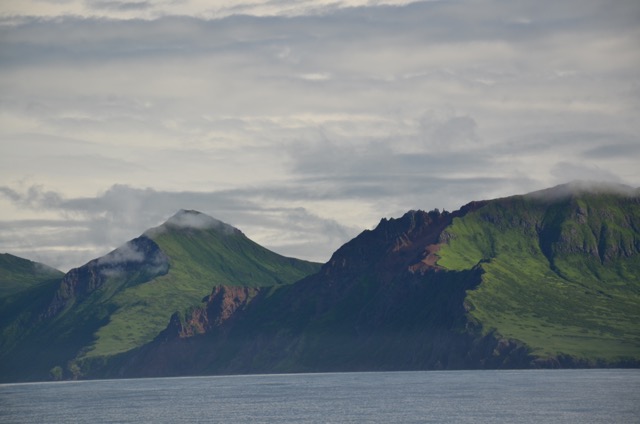It was a totally familiar remote Alaska experience given new life by the boys' involvement.
They were scheduled to fly out of the village of Akhiok three days ago. Bit of an adventure getting to the airstrip. We moved the mothership around from the delightful Rodman's Reach anchorage over to Kempff Bay, and then undertook the final approach to the Akhiok airstrip in our new beach seining dinghy, Oom Jock. Big chop, water over the bows, plenty of spray, boys' duffles in garbage bags, that sort of thing.
Then we reached the airstrip, the boys alight with the excitement of it all.
And then...nothing. Fine weather in Akhiok, but Kodiak totally socked in.
This was NOT what the boys were expecting: a lesson in the total acceptance that is waiting for a small plane flight in a place with weather as predictably awful as the western Gulf of Alaska.
We ended up retreating to the Mothership after a few hours of waiting to see if the plane would make it, and then back to Rodman's Reach. But not before we had met some amazingly helpful and friendly people in Akhiok. We really really like that village.
We returned the next day to try again, although this time it was the weather in Akhiok that didn't look promising, with a low ceiling and patchy ground fog.
But then we got the call on the VHF that the plane had left Kodiak, and by the time we were beaching Oom Jock in Akhiok the plane was landing. It's always like that with a delayed flight in the Bush. You wait, and maybe wait a bit more, and then suddenly everything is a big rush when the plane appears.
Before we knew it, the boys were strapped in the plane, feeling a bit self conscious in their rain gear, and even more self conscious with all the hugs and kisses their parents were pestering them with.
And then they were away. By the time we had Oom Jock back on the deck of the Mothership the boys were being greeted in town by my Mom, who has heroically flown up from Boston to shepherd them through the start of school while we finish up the sampling.
Thanks, Mom!
~~
The last time that Alisa and I did any sailing alone together was also on the east side of Kodiak. But it was 12 and a half years ago, when she was pregnant with Elias. All of our sailing since then has been a family affair. So it's not surprising that things are...different without the boys on board. I suppose that we're getting a tiny taste of empty nest syndrome, that experience for parents after the kids fly off to college and life beyond. But more than anything, the kids' absence is a reminder of what a delight it is to be on the boat with them, where they are so at home, and our daily life is an adventure.
We might have begun our voyaging life with the kids not quite as an afterthought, but certainly not as the main reason that we were going. We dropped everything 11 years ago and went to sea in spite of having a baby, not because we did.
But after ten years and one summer of sailing as a family, things have progressed to the point where the kids' involvement really is a big motivating factor, likely the biggest motivating factor.
There's just no kind of family life that we can imagine that compares with family life on a traveling boat - the mixture of freedom and closeness. And though it was time for us to give up the full-time sailing life and return to land life and school and all the rest, we have been very happy for the taste of that life that this last two months has given us.
~~
This post was sent via our high-frequency radio as we're far from internet range. Pictures to follow when we reach internet again. We can't respond to comments for now, though we do see them all!
----------
radio email processed by SailMail
for information see:
http://www.sailmail.com



















































